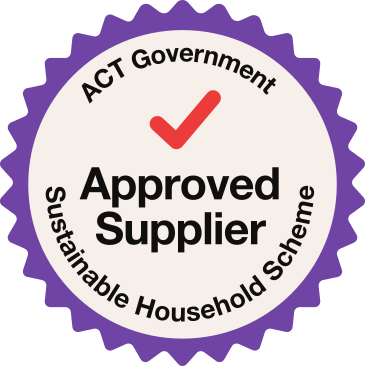As the demand for renewable energy surges, businesses in Canberra are increasingly turning to commercial solar installation to reduce energy costs, enhance sustainability, and future-proof operations. This guide provides an in-depth analysis of commercial solar installation in Canberra, exploring its benefits, installation process, cost considerations, and expert insights to help businesses make informed decisions.
Table of Contents
- Why Invest in Commercial Solar in Canberra?
- How Commercial Solar Works
- Key Benefits of Commercial Solar Installation
- Types of Solar Panels for Commercial Use
- Government Incentives & Rebates
- Understanding Commercial Solar Financing
- Cost Analysis & ROI of Commercial Solar
- Choosing the Right Solar Provider in Canberra
- Steps in Commercial Solar Installation
- Common Challenges & How to Overcome Them
- Solar Battery Storage Solutions
- Maintenance & Performance Monitoring
- Sustainable Business Practices with Solar Energy
- Solar Energy Trends in Canberra
- Case Studies: Successful Solar Installations in Canberra
- Environmental Impact of Commercial Solar Systems
- Comparing Commercial vs Residential Solar Systems
- Frequently Asked Questions (FAQs)
- Expert Tips for Maximizing Solar Efficiency
- Conclusion & Call to Action
Why Invest in Commercial Solar in Canberra?
Canberra boasts abundant sunlight, making it an ideal location for harnessing solar energy. Businesses investing in commercial solar enjoy significant electricity savings, reduced carbon footprints, and enhanced brand reputation.
Key Reasons to Invest:
- Lower Energy Costs: Reduce reliance on grid electricity and lock in lower energy rates.
- Government Incentives: Benefit from federal and state solar incentives.
- Sustainability Goals: Achieve corporate sustainability objectives and contribute to a greener future.
- Increased Property Value: Solar installations can enhance commercial property resale values.
How Commercial Solar Works
Commercial solar systems convert sunlight into electricity using photovoltaic (PV) panels. The generated electricity can be used on-site, stored in batteries, or fed back into the grid.
Key Components:
- Solar Panels: Capture sunlight and convert it into DC electricity.
- Inverters: Convert DC electricity into usable AC electricity.
- Battery Storage: Stores excess energy for later use.
- Monitoring Systems: Track system performance and efficiency.
Key Benefits of Commercial Solar Installation
1. Cost Savings
Businesses can save up to 70% on electricity bills by switching to solar power.
2. Energy Independence
Solar energy reduces dependence on the grid, safeguarding businesses from energy price hikes.
3. Reduced Carbon Footprint
Lower greenhouse gas emissions contribute to corporate social responsibility goals.
4. Long-Term ROI
A well-maintained commercial solar system can last over 25 years, providing consistent returns on investment.
Types of Solar Panels for Commercial Use
- Monocrystalline Panels - High efficiency, premium price.
- Polycrystalline Panels - Affordable, slightly lower efficiency.
- Thin-Film Panels - Flexible, suitable for large-scale installations.
Government Incentives & Rebates
The Australian government offers various incentives for commercial solar installations, such as:
- Small-Scale Technology Certificates (STCs)
- Large-Scale Generation Certificates (LGCs)
- Feed-in Tariffs (FiTs)
Understanding Commercial Solar Financing
Businesses can finance solar installations through:
- Upfront Purchase
- Solar Leasing
- Power Purchase Agreements (PPAs)
- Green Loans
Cost Analysis & ROI of Commercial Solar
Factors influencing costs include:
- System size and quality
- Installation complexity
- Government incentives
- Energy consumption needs
Choosing the Right Solar Provider in Canberra
When selecting a commercial solar provider, consider:
- Experience & Certifications
- Customer Reviews & Case Studies
- Warranty & After-Sales Service
- Financing Options
Steps in Commercial Solar Installation
- Site assessment & energy audit
- System design & proposal
- Permitting & approval process
- Installation & grid connection
- System testing & commissioning
Common Challenges & How to Overcome Them
- Roof Space Limitations - Opt for high-efficiency panels.
- Weather Conditions - Implement advanced panel technologies.
- Regulatory Compliance - Work with experienced providers.
Solar Battery Storage Solutions
Adding a battery storage system can maximize solar benefits by storing excess energy for nighttime or cloudy days.
Maintenance & Performance Monitoring
Regular maintenance ensures optimal performance. Key tasks include:
- Panel cleaning
- Inverter checks
- Monitoring software updates
Sustainable Business Practices with Solar Energy
Businesses using solar energy contribute to:
- Carbon neutrality goals
- Green supply chain initiatives
- Corporate ESG (Environmental, Social, Governance) commitments
Solar Energy Trends in Canberra
- Increased adoption of smart solar technology
- Growth in community solar projects
- Expansion of battery storage solutions
Case Studies: Successful Solar Installations in Canberra
Highlighting businesses that have successfully implemented commercial solar systems, their challenges, and the benefits reaped.
Environmental Impact of Commercial Solar Systems
Commercial solar reduces:
- Carbon emissions
- Dependence on fossil fuels
- Environmental degradation
Comparing Commercial vs Residential Solar Systems
| Feature | Commercial Solar | Residential Solar |
|---|---|---|
| Scale | Large-scale | Small-scale |
| Cost | Higher upfront cost | Lower upfront cost |
| ROI | Faster payback | Longer payback |
| Incentives | Higher rebates | Lower rebates |
Frequently Asked Questions (FAQs)
Q: How much does a commercial solar system cost? A: Costs vary based on size and complexity, typically ranging from $10,000 to $100,000+.
Q: Can my business qualify for government incentives? A: Most businesses can apply for STCs, LGCs, and FiTs.
Q: How long does installation take? A: Depending on system size, installation takes 2-8 weeks.
Expert Tips for Maximizing Solar Efficiency
- Optimize panel placement for maximum sunlight.
- Use high-efficiency inverters.
- Monitor and maintain the system regularly.
Conclusion & Call to Action
Investing in commercial solar installation in Canberra is a smart financial and environmental decision. With the right provider and system, businesses can enjoy long-term energy savings and sustainability benefits.
Ready to switch to solar?
Contact a trusted commercial solar provider in Canberra today for a free consultation!
Technical Aspects of Commercial Solar Systems
Commercial solar installations involve advanced technology to ensure maximum efficiency and longevity.
Components of a Commercial Solar System:
- Solar Panels: Convert sunlight into DC electricity.
- Inverters: Convert DC electricity into AC for business use.
- Battery Storage: Stores excess energy for peak usage times.
- Mounting Systems: Secure panels to rooftops or ground installations.
- Monitoring Systems: Track performance and optimize output.
Cost Breakdown of Commercial Solar Installation
Understanding the costs involved in commercial solar installation is crucial for budgeting and planning.
Typical Cost Ranges:
- Small Businesses (10-30 kW): $10,000 - $50,000
- Medium-Sized Businesses (30-100 kW): $50,000 - $150,000
- Large Enterprises (100+ kW): $150,000 - $500,000+
Factors Influencing Costs:
- System Size & Quality: Larger and higher-quality systems cost more but offer better long-term savings.
- Installation Complexity: Roof type, panel placement, and structural modifications can affect costs.
- Government Incentives: Rebates and tax credits can reduce upfront costs.
- Energy Needs: Higher energy consumption requires a more extensive solar system.
Energy Yield and Efficiency Considerations
The efficiency of a commercial solar system depends on multiple factors.
Key Efficiency Factors:
- Panel Efficiency: Ranges between 15-22% based on technology.
- Sunlight Exposure: Canberra receives an average of 4.5-5.0 peak sun hours per day.
- Shading & Orientation: Proper positioning and minimal shading improve efficiency.
- Temperature Coefficients: High temperatures can slightly reduce panel efficiency.
Grid Connection and Net Metering in Canberra
Connecting a commercial solar system to the grid allows businesses to sell excess energy.
Benefits of Grid Connection:
- Reduces energy costs by feeding surplus power back to the grid.
- Provides reliability with grid backup when solar production is low.
- Enables participation in feed-in tariff programs for additional revenue.
Regulatory Compliance for Commercial Solar
Businesses must adhere to regulatory guidelines when installing commercial solar systems.
Key Compliance Factors:
- Australian Standards (AS/NZS 5033): Ensures system safety and quality.
- Electrical Safety Regulations: Proper installation and maintenance procedures.
- Building Permits & Approvals: Local council requirements for commercial installations.
- Environmental Approvals: Compliance with sustainability and environmental impact assessments.
Conclusion & Call to Action
Investing in commercial solar installation in Canberra is a smart financial and environmental decision. With the right provider and system, businesses can enjoy long-term energy savings and sustainability benefits.
Ready to switch to solar?
Contact us, a trusted commercial solar provider in Canberra today for a free consultation!



